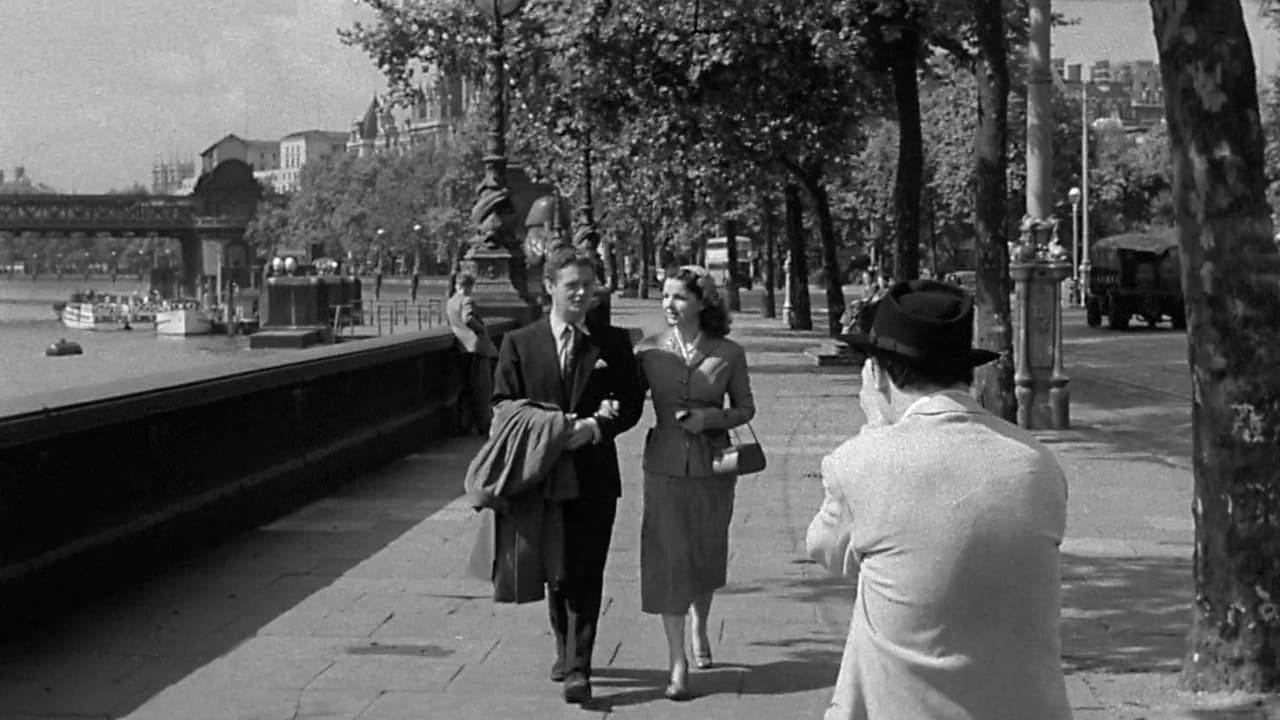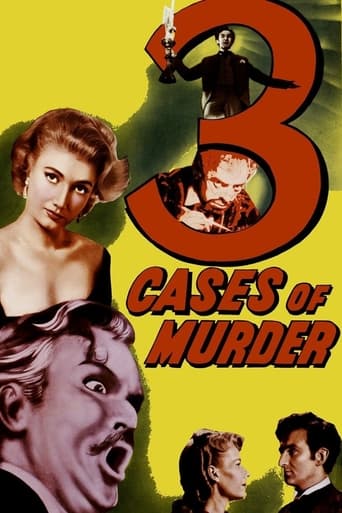

This movie was so-so. It had it's moments, but wasn't the greatest.
... View MoreIt's a good bad... and worth a popcorn matinée. While it's easy to lament what could have been...
... View MoreThe tone of this movie is interesting -- the stakes are both dramatic and high, but it's balanced with a lot of fun, tongue and cheek dialogue.
... View MoreClose shines in drama with strong language, adult themes.
... View MoreBritish anthology from the 1950's when the world was black and white, smoking was considered healthy & most people spoke with a plum in their mouths. Eamonn Andrews introduces three stories. The first is about a mysterious painting in an art gallery, the second a love triangle and the third a deadly tale of two political enemies. The first & third feature the supernatural. Each riveting story features a different director but they are all of a high calibre. I think it would have been slightly better had the second story also featured the supernatural, but only a minor quibble. As a film fan of over 35 years I only discovered this gem when it was screened on British TV two days ago. Superb.
... View MoreEamonn Andrews is the link man for two tales of supernatural suspense and one murder mystery.In the first segment, titled In The Picture, an art gallery guide is lured into a macabre house painting by the artist and finds himself at the mercy of the residents who dwell there. In the second segment, titled You Killed Elizabeth, two friends fall in love with the same woman and when she is murdered it's obvious one of them did it. But which one? The final segment, titled Lord Mountdrago, The Secretary of State for Foreign Affairs ruins the career of an opponent in Parliament and finds the man appearing in his dreams enacting retribution.As is always the case with anthologies, the quality of stories is mixed, with here the middle section being the one that is pretty standard fare. No such problem with the other two stories though.The first one is very creepy, even bordering on the terrifying as the tale reaches its conclusion. Once the story reaches the insides of the house in the painting, we are treated to a trio of odd characters living in a house that instantly conjures up images of horror. Ramshackle and creaky, director Wendy Toye further enhances the discord by using canted angles and personalised framing. An excellent story. Starring Hugh Pryse, Alan Badel and Eddie Byrne.The third tale is considerably boosted by Orson Welles giving bluster to the story written by W. Somerset Maugham. Not without genuine moments of humour, it never reaches scary heights but always it feels off-kilter, the revenge dream attack angle devilish and the production has good quality about it. Very good. Alan Badel co-stars and although the three stories are not related, he is the constant actor in all three. Grand old British trilogy. 8/10
... View MoreAll three stories contained within this film have interesting concepts, but they don't quite reach their full potential. The best is the first, directed by a woman (Wendy Toye), mainly for a fantastic (in every sense of the word), hypnotic sequence of two people entering a painting; this story is certainly highly imaginative, but the dialogue does tend to ramble a little. The second story, about two childhood friends and the woman who comes between them, has a good setup, but the big twist is blindingly obvious; to be fair, though, what happens after the big twist is much less so. The third story also has a great concept (a man entering another man's dreams at will), but it goes on too long, and in my opinion Orson Welles is slightly miscast as a victimized character. Alan Badel, who appears as three different characters in all three stories, walks away with the acting honors. **1/2 out of 4.
... View MoreHere's a project based on the notion of folded narrative.There are three stories, and it is marvelous how they complement each other.The project seems to have been built around the last story. It is by Somerset Maugham, adapted by the producer and starring Orson Welles. Orson was deep into his newly found soulmate and had just finished Mr. Arkadin, something special. The story is of a man, Orson's character, who makes an enemy. This enemy vows to destroy his spirit and begins to enter Orson's dreams. In "real life" he acknowledges having done so. This drives Orson mad, and to his death.Orson understood this notion of folded acting, where several layers of character as well as story are supported. We aren't at all sure what is dream, what is imagined and real. We are not sure who is the narrator: Orson, the enemy or some third observer. Orson supports all three. It is marvelous. We may never have another one with this depth.This final story is masterfully prepared by the two previous stories. The first is of mysteries in an art museum. Objects disappear, and a certain painting's frameglass breaks. The fold is that the most engaging painting in the building is the one whose glass breaks. It is painted by an unknown. We learn that this painter, now dead, occupies the house in the painting, with a couple others who were "assigned" to the painting. The house contains the art objects stolen from the museum. The story concerns the constraints of the folded medium, and how difficult it is to keep painting the painting once you are in it.The second story is a more ordinary fold: the framing of a friend for a murder, convincing that friend that he is guilty. The narrator, as we discover, is untrusted and has lied to us as well. This sets up our man Orson, whose "Mr. Arkadin," just happens to have precisely these three folds. Ted's Evaluation -- 3 of 3: Worth watching.
... View More